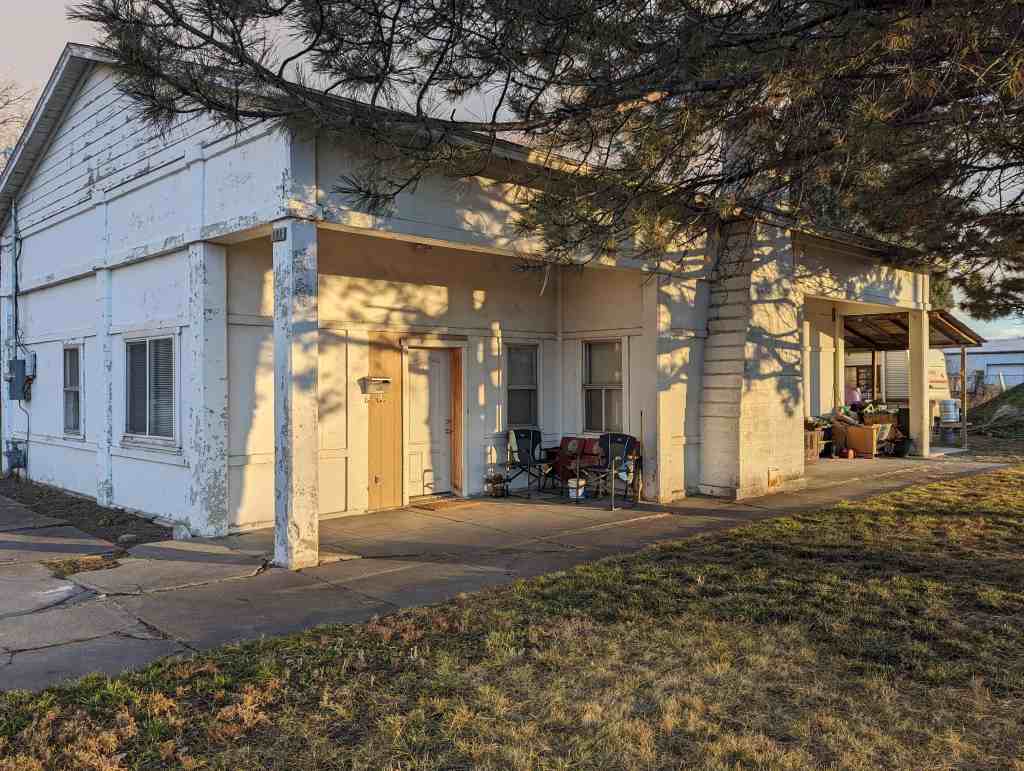
Located at 169 West 200 South in Pleasant Grove, the old railroad depot isn’t very recognizable as such, the original sign was recently found and is at the city’s Rose Garden Park.




History of the Pleasant Grove Train Station
Building the Railroad
As early as 1902, proposals were being made to build a railroad to provide services in Utah County. In 1912, Walter C. Orem, a wealthy promoter from Boston, secured both the rights and the financing (approximately $3 million) to build an electric railroad between Salt Lake City and Payson. Construction began in October 1912. Mrs. W. M. Smith and her daughter, Irene, planned and supervised the construction. Mrs. Smith was said to be the only female railroad contractor in the world at that time. The average cost of the line was $38,000 to $40,000 per mile. Mr. Orem purchased the land his rails used between towns, while securing contracts for the use of public streets in and through the various communities. 500 trackmen were employed to build the railroad.
Electricity to run the train was supplied by Utah Power and Light Company. On April 1, 1914 the electric line and substations were operational providing 1500 volts of direct current to power the trains.
In March 1914, service began between Salt Lake and American Fork. By July 1914, the line was complete and service extended through from Pleasant Grove to Provo. In 1916, service was extended south as far as Payson. A golden spike ceremony was held in Payson to celebrate the completion of the line on May 26, 1916.
In 1914 the Pleasant Grove Station was built using concrete slabs made in Salt Lake and transported to Pleasant Grove on the train. The station was located at 169 West 200 South. It included a waiting room, restroom, ticket window and a two bedroom apartment.
Running the Train
Electric trains provided several benefits. They were more luxurious, quieter, faster and more powerful. They were able to negotiate steeper grades and tighter curves than a steam engine and were cheaper and more convenient.
The SL&U had twelve steel passenger cars, three express cars and eight freight locomotives. The train traveled at 66 mph. The passenger cars were dark red and seated about 66 people. They were heated and lighted drawing power from motors that ran on the electricity of the line. They had smoking and non-smoking compartments as well as a freight compartment. Common nicknames for the train were Red Heifer (due to the dark red cars) and Leaping Lena (due to the rough ride.)
SL&U provided several services to Pleasant Grove. It was used for mail service and transporting goods including fruits and vegetables. SL&U instigated the store to door free delivery system that set a national precedent. It provided transportation to the LDS General Conference and other big events as well as allowing people to visit friends and family. Many people used the train to commute to work or attend dances and other social events.
1913-1925 were considered the golden years of the railroad. During that time passenger revenue accounted for 72 percent of all revenue. In 1919, passenger revenue increased 573% and 3000 passengers were riding daily on 36 trains. The train served more than 60 businesses. Mail was delivered 6 times a week on the evening train. In 1916, the train carried 1200 gallons of milk per day during December and 12,000 beets per year.
The End of the Line
In 1925, the SL&U fell into receivership. Deficits continued until 1929. In 1929, thanks to a massive advertising push, it rebounded. Times were tough in the 1930’s when money was scarce. In 1938, the Salt Lake & Utah Corporation gained control of the railroad. In 1938, Rio Grande Trailways brought bus service to Pleasant Grove. This competed directly with the railroad by running a similar route. The railroad started their own bus service in 1939, but still lost money. There was a brief increase during the early 1940’s because of gas rationing. By 1944, SL&U had reduced service to only seven passenger trains per day. On December 12, 1945 the railroad once again fell into receivership. On March 1, 1946 the SL&U closed down.

Pingback: Pleasant Grove Train Station Sign | JacobBarlow.com